Breaking Food News You Can Use Since 1985 - Mobi Media Food Reports & Reviews - Please Click On Logo For Most Recent Posts.
Tuesday, December 27, 2005
The 'Nun Bun' Has Been Stolen - You Bastards!
It was ineffable, it was inedible, but now it's gone. Early Christmas morning, an evil grinch pried the door off the Bongo Java cafe and got away with the cinnamon bun.
Before it was stolen, anyone who came into the cafe could see the bun. It sat on a shelf below the cash register. A large cup fill with change and a piggy bank sitting next to the roll were not taken. The roll, which was hard as a rock, had been there a while.
Ryan Finney, discovered the Nun Bun. When he first saw Mother Teresa in the bun, it made big news. Was it a miracle? Who knows? But Finney, who is not Catholic, has been watching over the roll ever since.
Bongo Java's owner Bob Bernstein, dubbed the bun, the Mother Teresa Cinnamon Bun and had T-shirts made up. Soon thereafter, he got a letter from Calcutta from Mother Teresa. The famous missionary didn't want her image or her name used for a commercial purpose. Bernstein decided then to call it the Immaculate Confection. Mother Teresa didn't like that either, so it became the Nun Bun.
According to Bernstein, Mother Teresa discussed the T-shirts bearing her likeness on her deathbed. Her lawyer asked her what she wanted to do about the Nun Bun. Mother Teresa laughed and pointed to her successor, Sister M Nirmala, and said, "find a roll that looks like her."
The Nun Bun Heist has brought the pastry some national publicity, once again. The story appeared on the front page of the Tennessean on Monday, and was covered by ABC and CNN as well.
Monday, December 26, 2005
Foodstuff of The Week: The Red Onion
 This week's featured foodstuff is the red onion. As simple as it is complex, the red onion works on so many levels. The research crew here found some history on the wwiz.com:
This week's featured foodstuff is the red onion. As simple as it is complex, the red onion works on so many levels. The research crew here found some history on the wwiz.com:
"The ubiquitous onion has a long, distinguished history and, like garlic, has been endowed with healing properties and mystical significance. For the ancient Egyptians, the onion's nine encircling layers represented eternity. Two thousand years ago, Egyptian princes were reputed to have spent 90 tons of gold buying them just to keep the workmen laboring on the pyramids in good health and spirits. That's a lot of gold and a whole lot of onions!
Throughout world history, onions have been thought of as food for the poor, since the strong odor and taste offended the palates of the wealthy. Yet history also reveals that onions were grown in the gardens of kings, such as Ur-Nammu of Ur in 2100 B.C.
The onion's spherical shape and concentric rings made it a powerful symbol for the universe and for the sun god. The round layers of the onion represented heaven, hell, earth and the universe. The form of the onion was a powerful image of divine perfection.
The vegetable itself was sometimes treated as a sacred object. Some Egyptians would swear their oaths on an onion, as a guarantee of good faith. Priests would not eat them, maybe as a sign of religious commitment or as a way of impressing the public with a feat of abstinence. Mourners and worshipers would sometimes bring onions as funeral gifts during the Old Kingdom period (c. 2615 to 2175 B.C.). A basket of onions was second only to bread as a valued offering. Onions appear in chapel altar pictures; in fact, Egyptian craftsmen would sculpt several vegetable forms in precious metals for the priests to use as temple offerings to the gods.
Still, the most intriguing fact about the onion as it existed in Egypt is in its relationship to the afterlife. According to James E. Harris and Kent R. Weeks, authors of X-Raying the Pharaohs: `They (Egyptians) recognized death, of course, but for them it was not the final, absolute end. Rather, it was the continuation of life in a different form. What they enjoyed and found pleasant in this life they tried to take with them in the next. To insure this, techniques of mummification were developed."
In this process, onions and garlic had both a spiritual and a physical role to play. The body of a deceased person had to be preserved for eternity to insure a "lasting home for the soul," and offerings, including food were placed in or near the tomb to be on hand in the afterlife. Sometimes real food was used, but sometimes scenes or sculpture depicted the items, which became ``real" through rites of magic. Some Egyptologists theorize that onions may have been used because their strong scent and/or magical powers would prompt the dead to breathe again. Other Egyptologists believe it was because onions and garlic were known for their strong antiseptic qualities, which were construed as magical and would be handy in the afterlife.
We do not know exactly when the onion reached Greece. According to Waverley Root in Food, by the time of the Athenian statesman Pericles (born c. 95 B.C.), the market of Athens was selling edible plants. Most of these vegetables were expensive and sold in small quantities, but onions were abundant–and affordable. That is probably why they were widely consumed, especially by the poor. It may also be why they were fed to soldiers.
The Israelites partook of Egyptian onions before Moses let them into Canaan. In the book of Numbers, in the story of the hardships of the odyssey, the Israelites speak fondly of the foods they had enjoyed and leeks, onions and garlic were among the six things that were mentioned.
Centuries later, Pliny the Elder, Rome's keen-eyed observer, wrote of Pompeii's onions before he was overcome and killed by the volcano's heat and fumes. Excavators of the doomed city would later find gardens where, just as Pliny had said, onions had grown. The bulbs had left behind telltale cavities in the ground.
From ancient times, onions have marched through history, a staple and universal foodstuff. They remained that way until the dawn of science, awaiting the magic of contemporary botanists, who would make the humble onion blossom into a bewildering array of shapes and forms.
Today onions are still so important that they are incorporated into everyday sayings, i.e. the French sometimes say, "Occupe toi de tes oignons" (Mind your business.)
Sunday, December 25, 2005
500-Pound Man Accused of Fast-Food Grifting
 Thanks to a loyal reader we have this story to share from you from the Local6 Florida News: "A 500-pound man in Seminole County, Fla., was arrested Tuesday on suspicion of scamming fast-food restaurants out of large amounts of milk shakes and tacos, according to a Local 6 News report. Jolicoeur would then call or visit the restaurants posing as a police officer or a firefighter and ask for a refund because there was a hair in his food, according to the report. "He would come back and say, 'Oh, there is something wrong with it,'" Seminole County Sheriff's spokesman Steve Olson said. "There was a hair in my shake or there was a hair in my tacos. And, then he wants his money back. "Jolicoeur was captured after he went to a Steak N' Shake restaurant near Oviedo and Taco Bell in Central Florida and allegedly tried to get money back for the food he ordered. Local 6 News reported that Jolicoeur has been arrested more than 24 times on charges of burglary, drugs and domestic problems, Local 6 News reported. "Jolicoeur's rap sheet is as thick as a book," Local 6 reporter Chris Trenkmann said. "When he was first checked into the jail in 1991, he weighed 360 pounds. This morning, the jail weighed him at 500 pounds."
Thanks to a loyal reader we have this story to share from you from the Local6 Florida News: "A 500-pound man in Seminole County, Fla., was arrested Tuesday on suspicion of scamming fast-food restaurants out of large amounts of milk shakes and tacos, according to a Local 6 News report. Jolicoeur would then call or visit the restaurants posing as a police officer or a firefighter and ask for a refund because there was a hair in his food, according to the report. "He would come back and say, 'Oh, there is something wrong with it,'" Seminole County Sheriff's spokesman Steve Olson said. "There was a hair in my shake or there was a hair in my tacos. And, then he wants his money back. "Jolicoeur was captured after he went to a Steak N' Shake restaurant near Oviedo and Taco Bell in Central Florida and allegedly tried to get money back for the food he ordered. Local 6 News reported that Jolicoeur has been arrested more than 24 times on charges of burglary, drugs and domestic problems, Local 6 News reported. "Jolicoeur's rap sheet is as thick as a book," Local 6 reporter Chris Trenkmann said. "When he was first checked into the jail in 1991, he weighed 360 pounds. This morning, the jail weighed him at 500 pounds."
Police in Sanford, Fla., and other cities are investigating the possibility that Jolicoeur was scamming area restaurants, Trenkmann said.
More info to come as we are following this unique story closely.
Thursday, December 15, 2005
Bender Is Over - Back to Solid Quality Food
Tuesday, December 13, 2005
2-Day Bender - Lord Please Help Me
Saturday, December 10, 2005
Fresh Oregon Coast Crab Pictures
Thursday, December 01, 2005
The FP Times Evening Meal - (additional snackage will follow)
Wednesday, November 30, 2005
5 Star Mexican Food: Sanchez Taqueria - Tigard, Oregon
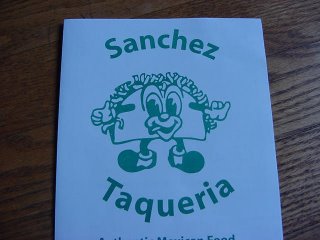
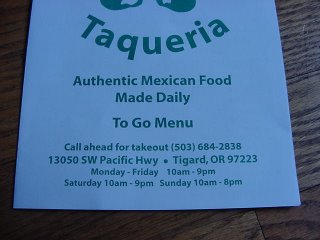
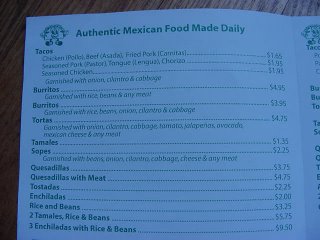
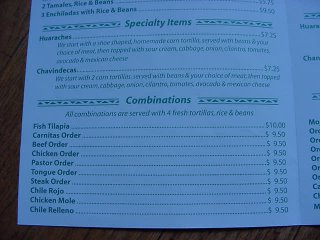
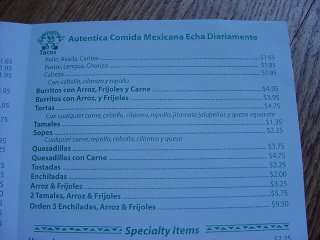
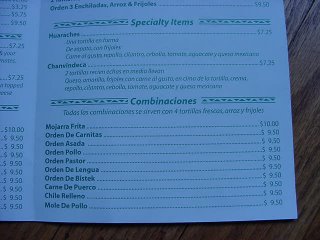
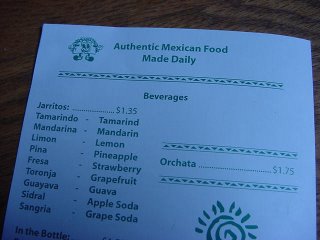
 The staff at the FP Times has enjoyed many fine mexican meals from in the country of Mexico itself and all the way up the US West Coast. We know authentic good mexican food. Sanchez Taqueria in Tigard,Oregon makes our exclusive 5-Star list. This smaller restaurant makes it food fresh daily and you can taste it. The salsas they offer up are also unique and excellent. If you are ever near this establishment it is a MUST VISIT restaurant. As you can see from the menu above - the prices are very reasonable and the portions are huge. Upon our next visit, we will take some photos of some dishes and post them here.
The staff at the FP Times has enjoyed many fine mexican meals from in the country of Mexico itself and all the way up the US West Coast. We know authentic good mexican food. Sanchez Taqueria in Tigard,Oregon makes our exclusive 5-Star list. This smaller restaurant makes it food fresh daily and you can taste it. The salsas they offer up are also unique and excellent. If you are ever near this establishment it is a MUST VISIT restaurant. As you can see from the menu above - the prices are very reasonable and the portions are huge. Upon our next visit, we will take some photos of some dishes and post them here.
Tuesday, November 29, 2005
The Road To Recovery
Sunday, November 20, 2005
Sprite "Aruba Mix" - Bad Timing or Bad Taste?
The Governor of Alabama has called for a boycott of the entire country (tourism and goods). From CNN: MONTGOMERY, Alabama (AP) -- Gov. Bob Riley called for a nationwide travel boycott of Aruba on Tuesday on behalf of a missing Alabama teenager's family, who accuse the island's government of not fully cooperating with the investigation into her disappearance. Riley asked his fellow governors to join him in urging the boycott of Aruba, where 18-year-old Natalee Holloway was last seen on May 30. "There are no other alternatives to get Aruban authorities to take this as seriously as they should," Riley said.
Debate is ongoing here at the FPT Test Kitchen.
We are encouraging you to post your opinion using the comments link on this post.
Saturday, November 19, 2005
Barq's Root Beer Blog - The Blog With Bite!
Thursday, November 17, 2005
Yes We Have A Winner
That is correct and Senet can now email us for his Arby's coupon.
Saturday, November 12, 2005
5-Day 'Name That Meal' Contest - It's On
Reader Submits Photo Of His Grocery Store: Frazier Foods
Friday, November 11, 2005
Reader Calls For Pizza Hut To Offer BBQ Sauce For Individual Sale
Tuesday, November 08, 2005
Reader exclaims: "I Did Not Believe I Saw The Wienermobile Today"
 Regular reader and contributor Magnum of PortalX Ventures experienced something incredible today. He saw the actual Wienermobile in person. Nuff Said.
Regular reader and contributor Magnum of PortalX Ventures experienced something incredible today. He saw the actual Wienermobile in person. Nuff Said.
Monday, November 07, 2005
Tootsie Pops: 100 down and more to go
 We work late at the offices of The Fat Pride Times, so we had candy on hand for any trick or treaters. We gave full size candy bars and a handful of these Tootsie Pops. When all was done, we had about 3 huge bags of these suckers left. I have eaten over 100 since and I still am reaching for more as this is posted. Excellent candy. I dont care about 'how many licks it takes to get to the center' cause I just chomp em. FP Times recommends this candy product. I am trying to save the sticks and hope to have a picture of the massive pile up here shortly.
We work late at the offices of The Fat Pride Times, so we had candy on hand for any trick or treaters. We gave full size candy bars and a handful of these Tootsie Pops. When all was done, we had about 3 huge bags of these suckers left. I have eaten over 100 since and I still am reaching for more as this is posted. Excellent candy. I dont care about 'how many licks it takes to get to the center' cause I just chomp em. FP Times recommends this candy product. I am trying to save the sticks and hope to have a picture of the massive pile up here shortly.
Wednesday, November 02, 2005
Everybody Loves Waffles - Right?

 A reader sent us the excellent waffle themed images you see above. Everyone loves a good waffle. In fact, there are two days of the year set aside for them: International Waffle Day on March 25th and National (U.S.) Waffle Day on August 24th.
A reader sent us the excellent waffle themed images you see above. Everyone loves a good waffle. In fact, there are two days of the year set aside for them: International Waffle Day on March 25th and National (U.S.) Waffle Day on August 24th.Here is some waffle history from mrbreakfast.com
13th Century A.C. - Ancient Greeks cook flat cakes between two metal plates. These early waffles were called obleios and were primarily savory in nature, prepared with cheeses and herbs.
1620 - The pilgrims bring Dutch "wafles" to America.
1735 - The word "waffle" - with two "f"s - appears in English print for the first time.
Late 1800's - Thomas Jefferson returns to the U.S. from France with a long handled, patterned waffle iron.
1869 - Cornelius Swarthout patents the first U.S. Waffle Iron.
1953 - Frank Dorsa's Eggo Frozen Waffles are sold in Supermarkets for the first time.
1964-65 - Brussels restaurateur Maurice Vermersch brings his wife's Brussels Waffle recipe to the World's Fair in New York. The fluffy yeast-infused waffle becomes a huge hit and becomes known as the Belgium waffle.
Tuesday, October 25, 2005
The Fat Pride Times Bagel Meal Plate
Reader Debuts PortalX Webstore With Gourmet Food Offerings


 Regular contributor to The Fat Pride Times, Magnum (on the East Coast), has recently ventured into the world of e-commerce. Beginning with his own IRC Network (irc.portalx.org), he has built the PortalX.org name into a solid web presence. While his new store offers many many things, we are mostly interested here at the exciting selection of foodstuffs available there. Everything from gourmet cheeses for you uptown readers to bunker rations for our doomsday scenario readers.
Regular contributor to The Fat Pride Times, Magnum (on the East Coast), has recently ventured into the world of e-commerce. Beginning with his own IRC Network (irc.portalx.org), he has built the PortalX.org name into a solid web presence. While his new store offers many many things, we are mostly interested here at the exciting selection of foodstuffs available there. Everything from gourmet cheeses for you uptown readers to bunker rations for our doomsday scenario readers.















